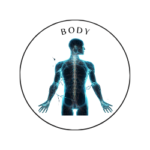 Mind
Mind
- Digital and Modern Well-being
- Mental Health and Emotional Well-being
- Mind-Body Connection and Holistic Health
- Parenting and Family
- Personal Growth and Development
- Relationships and Social Well-being
- Stress and Relaxation
- Therapeutic and Creative Practices
- Trauma and Recovery
- Work, Productivity, and Discipline
 Body
Body
 Fitness
Fitness
 Food
Food
 Beauty
Beauty
Coping with Seasonal Affective Disorder

How to Brighten Your Mood in the Darker Months
As the days grow shorter and the skies cloudier, many people experience a noticeable shift in mood and energy. For some, this change in seasons triggers a form of depression known as Seasonal Affective Disorder (SAD). Often referred to as the “winter blues,” SAD is more than just feeling down during cold weather. It’s a type of depression that typically occurs in the darker months of autumn and winter.
If you find yourself struggling with low energy, lack of motivation, or persistent sadness as the seasons change, you’re not alone. In this article, we’ll explore what SAD is, its symptoms, and effective coping strategies to help you manage the condition and boost your mental health during the colder months.
What is Seasonal Affective Disorder?
Seasonal Affective Disorder is a type of depression that follows a seasonal pattern, most commonly starting in late autumn and continuing through the winter months. While the exact cause of SAD isn’t fully understood, it’s believed to be linked to the reduced levels of sunlight during these months, which can disrupt your biological clock (circadian rhythm) and affect serotonin and melatonin levels—neurotransmitters that play key roles in mood regulation and sleep.
People living in areas with long, dark winters or those who are more sensitive to seasonal changes are more likely to experience SAD.
Common Symptoms of SAD
The symptoms of Seasonal Affective Disorder are similar to those of major depression but tend to occur in a predictable seasonal pattern. These include:
- Persistent low mood: Feeling sad or depressed for most of the day, nearly every day.
- Loss of interest in activities you once enjoyed.
- Low energy and fatigue, even after plenty of rest.
- Changes in appetite or weight, particularly a craving for carbohydrates.
- Sleep problems, such as oversleeping (hypersomnia) or difficulty waking up.
- Difficulty concentrating or making decisions.
- Feelings of hopelessness or worthlessness.
- Social withdrawal, often feeling like “hibernating” from others.
Coping Strategies for Seasonal Affective Disorder
The good news is that there are several ways to manage and cope with SAD. Below are some proven strategies that can help improve mood and wellbeing during the darker months.
1. Light Therapy
One of the most effective treatments for SAD is light therapy. This involves sitting near a special lightbox that mimics natural sunlight, helping to regulate melatonin production and boost serotonin levels.
- How it works: Light therapy boxes emit bright light (usually 10,000 lux) that is much stronger than normal indoor lighting. By using the lightbox for 20-30 minutes each morning, ideally soon after waking, you can help reset your internal clock and improve your mood.
- When to use it: Light therapy is most effective when started in autumn and used consistently throughout the winter months.
2. Get Outside and Embrace Natural Sunlight
While sunlight may be scarce in the winter, it’s still important to spend time outdoors whenever possible. Natural light, even on cloudy days, can help alleviate some symptoms of SAD.
- Actionable tips:
- Take a daily walk outside, especially during midday when sunlight is strongest.
- Sit by a window or open your blinds to let natural light into your home.
- Try outdoor activities, like brisk walking, even on colder days to get fresh air and exposure to daylight.
3. Exercise Regularly
Exercise is a powerful mood booster that can help counteract the symptoms of SAD. Physical activity increases the production of endorphins, which improve mood and reduce stress.
- Suggested activities:
- Aim for at least 30 minutes of moderate exercise a day, such as walking, cycling, or yoga.
- Try to do your workouts outside when possible for a double benefit: sunlight and exercise.
- If going outside isn’t an option, indoor activities like home workouts, dance, or even stretching can still provide a mental health boost.
4. Eat a Balanced, Mood-Boosting Diet
Your diet plays an important role in how you feel. Eating a balanced diet rich in nutrients can help keep your energy levels stable and support your mental health during the winter months.
- Foods that help:
- Complex carbohydrates like whole grains, vegetables, and legumes can provide steady energy and curb cravings for sugary, high-carb foods.
- Omega-3 fatty acids found in fish like salmon, walnuts, and flaxseeds have been linked to improved brain function and reduced symptoms of depression.
- Vitamin D-rich foods such as fortified cereals, milk, and mushrooms can help compensate for the lack of sunlight in the winter.
- Limit alcohol and caffeine, as they can worsen mood swings and disrupt sleep.
5. Maintain a Consistent Sleep Schedule
SAD often disrupts sleep patterns, making you feel more tired and sluggish. To combat this, focus on maintaining a regular sleep schedule.
- Sleep hygiene tips:
- Go to bed and wake up at the same time each day, even on weekends.
- Avoid napping during the day, as it can interfere with nighttime sleep.
- Create a relaxing bedtime routine, such as reading or taking a warm bath, to signal to your body that it’s time to wind down.
6. Connect with Others
Social withdrawal is common in people with SAD, but isolation can make symptoms worse. Even though you may feel like hibernating, maintaining connections with friends and family is crucial.
- How to stay connected:
- Schedule regular catch-ups with loved ones, even if it’s virtual.
- Join winter social activities, clubs, or support groups.
- Let others know how you’re feeling, so they can provide support and encouragement.
7. Seek Professional Help
If your symptoms of SAD are severe or persistent, it’s important to seek help from a mental health professional. Cognitive Behavioural Therapy (CBT) has been shown to be effective in treating SAD by helping individuals change negative thought patterns and develop coping strategies.
- Therapeutic options:
- A therapist can help you explore underlying emotional issues and offer guidance on managing SAD.
- In some cases, antidepressant medications may be prescribed to help balance serotonin levels during the winter months.
8. Practice Mindfulness and Relaxation Techniques
Mindfulness, meditation, and relaxation exercises can help you manage stress and improve your emotional wellbeing during the darker months.
- Mindfulness activities:
- Try deep breathing exercises, progressive muscle relaxation, or guided meditations.
- Practice mindfulness by focusing on the present moment during daily tasks, such as eating, walking, or even sipping tea.
- Yoga, tai chi, and other forms of gentle movement can help you stay grounded and relaxed.
9. Plan Activities to Look Forward To
Winter can feel long and monotonous, so having something to look forward to can improve your mood. Plan enjoyable activities, whether it’s cozying up with a book, trying a new hobby, or organising a small trip.
- Ideas:
- Explore indoor hobbies like crafting, cooking, or photography.
- Treat yourself to a home spa day, complete with candles and soothing music.
- Plan a weekend getaway to a new destination to break up the winter routine.
Seasonal Affective Disorder is a real challenge for many people, but with the right strategies and support, it’s possible to manage symptoms and stay positive through the colder months. By embracing light therapy, staying active, eating a balanced diet, and maintaining social connections, you can improve your mood and make the winter season more bearable. If you’re struggling, don’t hesitate to reach out to a professional for guidance and support.
By taking small, mindful steps, you can reclaim your energy, lift your spirits, and look forward to brighter days a


